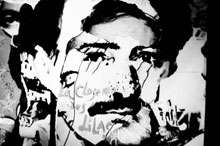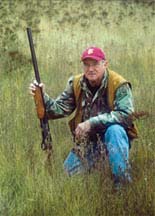No products in the cart.
A Letter from Ernest

Papa Reveals His Character
By Ron McFarland
As it happened, I was working as an assistant at the public library in Cocoa, Florida, the summer of 1961 when, on the morning of July 2, Ernest Hemingway took up his prized shotgun in Ketchum and, as a buddy informed me, “blew his head off.”
Back then, Idaho was as remote from my consciousness as Timbuktu, which (for the record) is located in the middle of Mali. I’ve been an Idahoan for forty-five years now, and I’ve paid my respects to Hemingway’s grave in Ketchum and have made the pilgrimage to his bronze head overlooking Trail Creek. But just eighteen in 1961 and about to start my sophomore year at the local junior college, I’d acquired only minimal interest in the writing, life, and legend of Papa. I’d read a couple of stories, including “Big Two-Hearted River,” and in junior English I read The Old Man and the Sea, as darned near every high school student did. I don’t recall being terribly impressed.
I still have my Special Student’s Edition of the novella in its light blue dust jacket that features a huge marlin dwarfing old Santiago in his tiny wooden skiff. It’s an impressive fish. The book runs 127 pages in this edition and my copy is underlined in ink and fitted out with occasional, lame remarks in the margin like this one on page 99: “Note there is no building up to climax—all just happens.” So ran my insightful comment after reading Hemingway’s terse sentences: “The old man looked at the fish constantly to make sure it was true. It was an hour before the first shark hit him.”
July 2 was a Sunday, so the library was closed, but I remember on Monday how all of our Hemingway seemed to fly off the shelves. Our small-town library held the basic books available at the time: the 1938 edition of the collected stories, now surpassed by the so-called Finca Vigía edition of the Complete Stories; the major novels—The Sun Also Rises, A Farewell to Arms, For Whom the Bell Tolls, and of course The Old Man and the Sea—and I think we had his “Key West novel,” To Have and Have Not, which was made into a memorable movie starring Humphrey Bogart and young Lauren Bacall back in 1944. This may sound unlikely now, but I do actually remember the last one I checked out to one of our patrons: Death in the Afternoon.
This content is available for purchase. Please select from available options.
Purchase Only
Purchase Only

